Sports
12 best beach towns in Florida
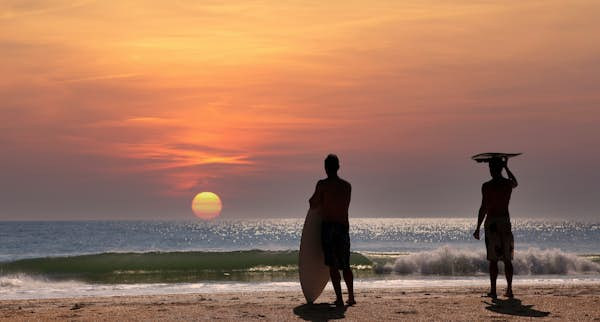
People come to Florida for the sunshine and wide beaches, and they are often surprised by the vast differences from town to town. From pastel-painted bungalows in the Keys to Italian-inspired downtowns and laid-back islands in the Gulf where dolphins outnumber chain restaurants, every destination in the Sunshine State has a personality all its own. To help you narrow down your options, here are 12 of Florida’s best beach towns.

1. New Smyrna Beach
Best for catching a wave
Island time rules New Smyrna Beach, an adorably funky town with a deep-rooted surf scene. No high rises here, but NSB is home to 175-foot Ponce Inlet Lighthouse, the state’s tallest. Flagler Avenue, lined with indie surf shops and seafood joints, leads straight to the sand. Find the best waves in the inlet and near the jetty, but be aware that you can drive on the beach in Volusia County. For a more idyllic atmosphere – and wildlife galore, including manatees and leatherback sea turtles – bring your board to the undeveloped Canaveral National Seashore.
Vibes: A funky, small-town surf haven where no shirt, no shoes is no problem.
Best thing to do: Take surf lessons – consistently calm waves make the Space Coast one of the best places to learn in Florida.
Where to stay: The Salty Mermaid Hotel puts you steps from both the beach and Flagler Avenue. Across the causeway, Black Dolphin Inn feels exclusive, with balconies overlooking the Indian River.
Where to eat: Make brunch reservations at The Baker’s Table specifically to try the conch fritters.
Planning tip: The best swells roll in during fall (especially during hurricane season) and winter.
Advertisement

2. Venice
Best for shelling and beachcombing
Featuring pink Mediterranean Revival buildings and a downtown lined with mom-and-pop shops, Venice blends the natural beauty of the Gulf Coast with Italian charm. The real draw, though, lies beneath your feet. Area beaches include Venice Beach, certified a Blue Wave Beach by Clean Beaches Coalition; Brohard Paw Park, the county’s only dog beach; and Caspersen Beach, aka Shark Tooth Beach.
Vibes: Easygoing Gulf Coast charm with a hint of Mediterranean elegance.
Best thing to do: Hunt for fossilized shark teeth in the sand at Caspersen Beach, especially at low tide or after a storm. Stroll down past the crowds to find lots of unbroken, perfectly triangular teeth.
Where to stay: Inn at the Beach puts you directly across the street from Venice Beach and offers guests complimentary beach chairs and umbrellas.
Where to eat: Don’t be put off by the fact that Belki’s Cuban Deli is inside a gas station; the pressed Cubano sandwich is as authentic as it gets.

3. St Augustine
Best for getting a taste of Europe – without the jet lag
St Augustine is the oldest continuously occupied European settlement in the United States, founded by Spanish settlers in 1565. Cobblestone streets, Spanish colonial architecture and centuries-old landmarks like the Castillo de San Marcos define its historic core. After wandering the narrow streets, luxuriate on wide, pristine beaches. Spend a day at St Augustine Beach, with sand volleyball, a fishing pier and splash pad. Hang ten at quiet Vilano Beach or dive into a book at secluded Crescent Beach.
Vibes: Old World Europe meets classic Florida beach vacation.
Best thing to do: Stroll pedestrian-only St. George Street. Visit the Oldest Wooden Schoolhouse, explore the Pirate & Treasure Museum, and try unexpected popsicle flavors at The Hyppo (my personal favorite: Datil Pepper Cheesecake, using native spicy-sweet Datil peppers).
Where to stay: Nine historic homes and a number of elaborate fountains and gardens make up The Collector Inn. You can walk almost everywhere, but the inn also offers complimentary bicycles.
Where to eat: The five-course Chef’s Pairing Menu at La Cocina is worth the spend. It’s at The Cellar Upstairs on the rooftop of San Sebastian Winery.
Planning tip: St Augustine really shines at Christmas. Book early – like, a year early – to witness the magic of 20 city blocks plus boats and even the lighthouse decked out in millions of lights.

4. Islamorada
Best for a tropical island getaway without leaving the US
This Upper Florida Keys village encompassing six keys tempts sun worshippers with crystal-clear water, palm-fringed beaches and arguably the best snorkeling and fishing in Florida. Beachgoers should hit Anne’s Beach and Founders Park Beach, two of the nicest beaches in the Keys.
Vibes: Feels like slipping away to the Bahamas – no passport required.
Best thing to do: Book a combo jet ski and snorkeling tour to experience Islamorada’s incredible coral reefs and marine life. Sportfishing enthusiasts should also book a fishing charter, either deep sea or to the shallow “flats.”
Where to stay: Amara Cay offers amenities galore, from a private beach and water taxi to paddleboard rentals, snorkeling excursions and Ocean Golf, an experience that allows you to hit biodegradable, fish food-filled golf balls into the ocean.
Where to eat: See which key lime pie reigns supreme by trying it at several places: Midway Cafe, Marker 88 and Green Turtle Inn all have borderline transformative versions. Make a quick detour at Blond Giraffe Key Lime Pie Factory in Tavernier (Key Largo), too. For research, of course.

5. Grayton Beach
Best for a laid-back 30A escape
Taking the creative free spirit of the Florida Panhandle to heart, Grayton Beach is a 1-mile stretch of bohemian paradise between Destin and Panama City Beach. It’s a tranquil base for exploring Highway 30A, surrounded by rare coastal dune lakes (they exist only in five places worldwide) and filled with unpretentious cafes and art galleries – including the Grayt Wall of Art, an outdoor gallery on a fence.
Vibes: Eclectic and artsy.
Advertisement
Best thing to do: Rent kayaks in Grayton Beach State Park and paddle the glassy coastal dune lakes.
Where to stay: Beach access is a contentious topic along Highway 30A; choose a vacation rental with a deeded private beach (not just beach access). If you’re OK with jockeying for space on the public beaches, Hibiscus Coffee & Guesthouse is an adorable, affordable B&B.
Where to eat: The Red Bar’s floor-to-ceiling decor, live music and simple but ultra-fresh Gulf Coast cuisine embody the exact vibe of Grayton Beach.
Planning tip: Unfortunately, several beaches section off small public-access areas, cramming people into rectangles. Avoid this by visiting a 100% public beach – but arrive early or late (before 8am or after 4pm). Walton County Tourism created a helpful interactive beach access map; the best public accesses include Grayton Beach State Park, Topsail, Deer Lake State Park and Inlet Beach.
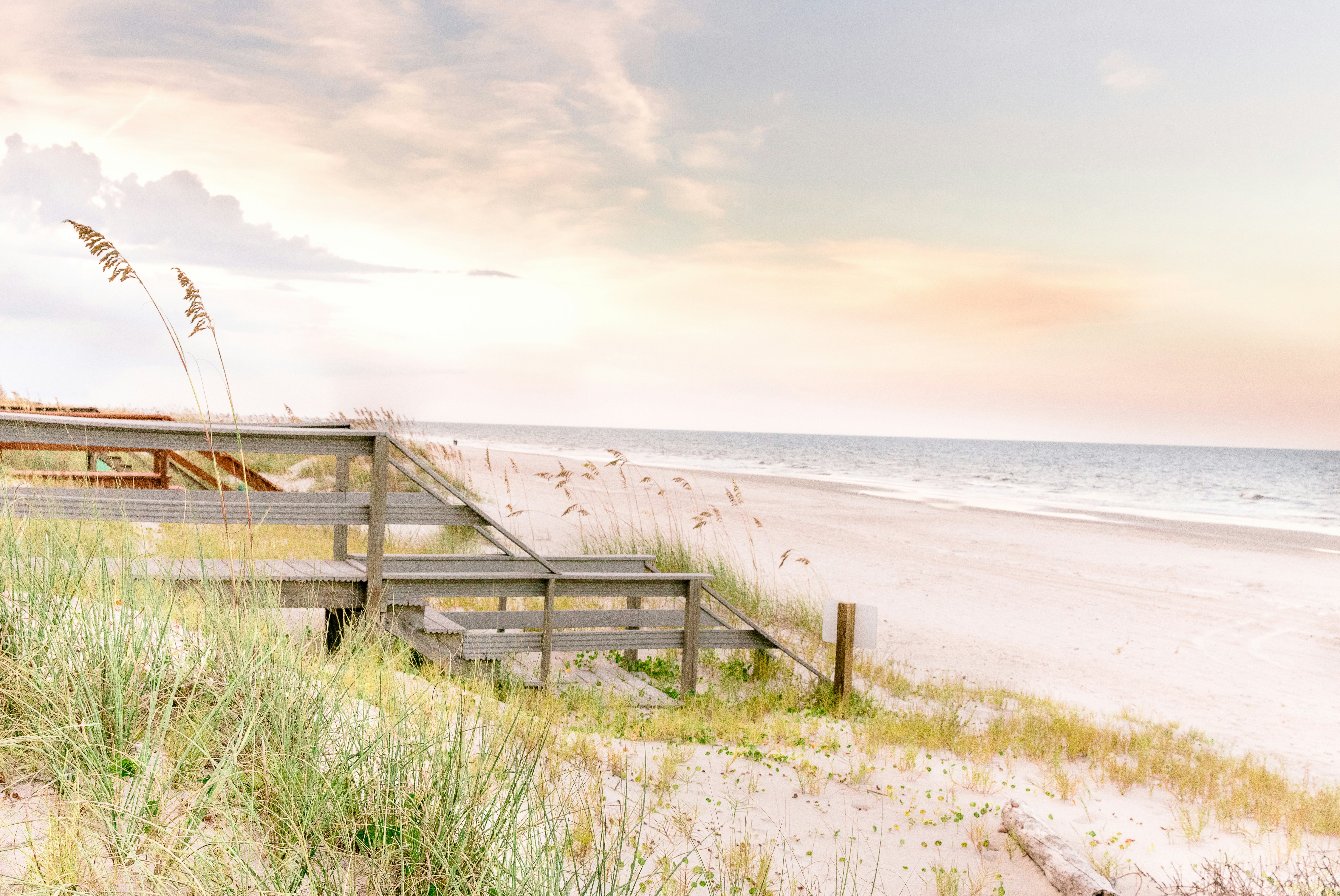
6. Fernandina Beach
Best for foodies
On Amelia Island in far northeastern Florida, Fernandina Beach oozes coastal charm and Southern hospitality. Its riverside historic district is filled with Victorian-style boutiques, chef-driven restaurants and Florida’s oldest bar. Aside from the annual Shrimp Festival in early May, everything, including beaches, is typically blissfully uncrowded. Main Beach and Seaside offer classic beach experiences with concessions and sand volleyball, while Fort Clinch State Park is wild and secluded.
Vibes: A Deep South beach town reminiscent of Charleston, South Carolina.
Best thing to do: Explore Boneyard Beach, strewn with hauntingly beautiful sun-bleached driftwood. No swimming, though; due to submerged trees, it’s not safe.
Where to stay: With its wraparound porch, direct beach access and daily chef-prepared breakfast, Elizabeth Pointe Lodge embodies Fernandina Beach culture.
Where to eat: Head to T-Ray’s Burger Station, in a former gas station off the well-beaten tourist path, for juicy burgers and fluffy breakfast biscuit sandwiches.

7. Pensacola Beach
Best for an active beach trip
If it can be done on (or in) the water or a beach, you’re sure to find it in Pensacola. Take your pick: surfing, fishing, diving, paddling, jet skiing, hiking, parasailing, snorkeling, biking, boating or simply soaking up the sun. Though often lumped in with Pensacola proper, PB has a distinct tropical vibe, with a powder-sugar shoreline and Caribbean-esque turquoise water. For an even quieter escape, head 15 minutes west to Fort Pickens’ pristine Langdon Beach, part of Gulf Islands National Seashore.
Vibes: An easygoing island town with big adventure energy.
Best thing to do: Catch the US Navy’s Blue Angels, famed for their aerobatic flying skills, during a public practice.
Where to stay: The Pensacola Beach Resort complements your adventures with perks like on-site beach gear rentals, easy-to-book excursions, an outdoor heated pool and a low-key beach bar.
Where to eat: Order the fried red snapper collar at Pearl & Horn in Pensacola. The complex, 38-ingredient dish incorporates Adjika, a condiment so significant to Georgian culture it’s UNESCO-designated as “Intangible Cultural Heritage.”

8. Anna Maria Island
Best for a mini taste of the Bahamas
Strict building rules prevent high-rises, helping Anna Maria Island maintain its castaway charm. The barrier island stretches just 7 miles but offers a full dose of life in the tropics, with shallow, clear-as-gin turquoise water, soft sand and beach bungalows in a rainbow of colors. Explore AMI’s three laid-back towns – Anna Maria, Holmes Beach and Bradenton Beach – all linked by a free trolley. Hop between Coquina, Manatee and Bean Point beaches, all equally stunning.
Vibes: A Caribbean getaway, minus the strain on your wallet.
Best thing to do: Grab an ice cream cone from Two Scoops and catch the sunset on the pier.
Where to stay: Choose from candy-colored cottages or resort-style condos – both with private beach access – at sister properties Tradewinds Beach Resort and Tortuga Beach Resort.
Where to eat: Have lunch (or dinner or drinks) at Anna Maria Island Beach Cafe, a true toes-in-the-sand establishment in Holmes Beach. And whether for breakfast or a midday treat, stop into The Donut Experiment for customizable, made-in-front-of-you donuts.
Planning tip: Snag free parking in centrally-located Holmes Beach and rent bicycles (or beach gear, fishing rods, kayaks, even strollers) from AMI Beach Fun Rentals, then explore on two wheels.

9. Delray Beach
Best for strolling from galleries to the beach without needing a car
Walkable, vibrant Delray Beach has a fantastic cultural scene. There’s a sprawling arts district, a dedicated art trail, over 40 murals throughout town and scores of unique museums. Highlights include the Morikami Japanese Gardens, Silverball Pinball Museum and Spady Cultural Heritage Museum, dedicated to Black history in Palm Beach County. Atlantic Avenue is the hub for local dining and nightlife, and it also conveniently leads straight to Delray Municipal Beach.
Vibes: A walkable, artsy beach town buzzing with culture and creativity.
Best thing to do: Catch a Twilight Tribute Series concert at Old School Square Amphitheatre on the third Thursday of every month. Tribute bands cover artists ranging from Zac Brown Band to Bon Jovi and No Doubt.
Where to stay: Crane’s Beach House feels like a posh hideaway tucked in the jungle, but it’s just one block off Atlantic Avenue and a five-minute walk to the beach.
Where to eat: Grab $3 tacos, $5 quesadillas and $6 margaritas during happy hour (4pm to 7pm and 12am to 2am daily) at El Camino.
Planning tip: When you just don’t feel like walking, take advantage of Freebee, a free, on-demand shuttle service operating downtown.

10. St George Island
Best for getting proper R&R on the beach (with your dog)
Tucked along Florida’s spectacularly quiet “Forgotten Coast,” St George Island is the place to go when you want to do, well, nothing. The 22-mile-long barrier island is home to just one stop sign and St George Island State Park, consistently ranked one of Dr. Beach’s top US beaches – and the 2023 winner. Outside the state park, the island’s other beaches welcome dogs, along with many restaurants and vacation rentals. Stop in Apalachicola on your way, famous for oysters and candy-colored homes.
Vibes: The type of small, dreamy coastal town Nicholas Sparks would choose for a book setting.
Best thing to do: Climb 92 wooden steps and a ladder to the top of Cape St George Light, a reconstructed 19th-century lighthouse overlooking the Gulf and Apalachicola Bay.
Where to stay: Walk to everything in under five minutes from St George Inn, with vintage vibes and a huge wraparound deck. If you have a full week, rent a home in the exclusive St George Plantation.
Where to eat: Load up on fresh oysters, grouper tacos and signature Sandblaster frozen cocktails at dog-friendly Blue Parrot. Right next door, you can also rent jet skis.

11. Cocoa Beach
Best for families
Cocoa Beach strikes an unusual balance: It’s a laid-back surf town (even nicknamed the “East Coast surf capital”), yet also has loads of family-friendly attractions. Enjoy free beach access at Lori Wilson Park, watch a rocket launch, grab soft serve on the 800-foot-long Cocoa Beach Pier, and browse Ron Jon, the world’s largest surf shop. With Orlando theme parks just an hour away and proximity to the Kennedy Space Center, this makes a flexible basecamp.
Vibes: A classic surf town where rockets regularly launch and kids learn to ride their first wave.
Best thing to do: Dedicate at least half a day to the Kennedy Space Center, and in the summer, book a nighttime kayaking tour to see rare bioluminescence.
Where to stay: The Hilton Garden Inn Cocoa Beach Oceanfront caters to families, with an arcade, tremendous pool deck and two private paths directly to the beach.
Where to eat: Try Caribbean fusion like the Cheesesteak Caribe on Puerto Rican Sobao bread at The Tiny Turtle.
Planning tip: Cocoa Beach hotels spike in demand around rocket launch and cruise ship schedules.

12. Marco Island
Best for exploring the Everglades in a bougie way
Marco Island is like a tale of two cities, but in one. A plethora of mansions and exclusive resorts call it home, plus it serves as the gateway to the Ten Thousand Islands and Everglades National Park, the largest subtropical wilderness in the US and one of the world’s biggest wetlands. Adding to its allure, Marco Island offers unspoiled beaches and excellent fishing (especially for snook, tarpon and grouper).
Vibes: A little bit Everglades, a little bit extravagance.
Best thing to do: Take a day trip to Everglades City, about 40 minutes away. Hop on an airboat tour through a mangrove jungle or cruise through the Ten Thousand Islands, inside the national park.
Where to stay: The JW Marriott Marco Island Beach Resort is a bit spendy, but worth it. On an expansive private beach, the JW has a whopping 12 restaurants, two golf courses, a wonderful spa, four pools and 10K Alley, an arcade and bowling alley with an impressive taproom.
Where to eat: Sample the extensive fresh oyster and raw bar selections at The Oyster Society. A rotating selection of about a dozen oysters changes daily, and there’s a sushi bar in the dining room. Save room for the real star: the spiced carrot cake.
Sports
Cowan Named Patriot League Track Athlete of the Week
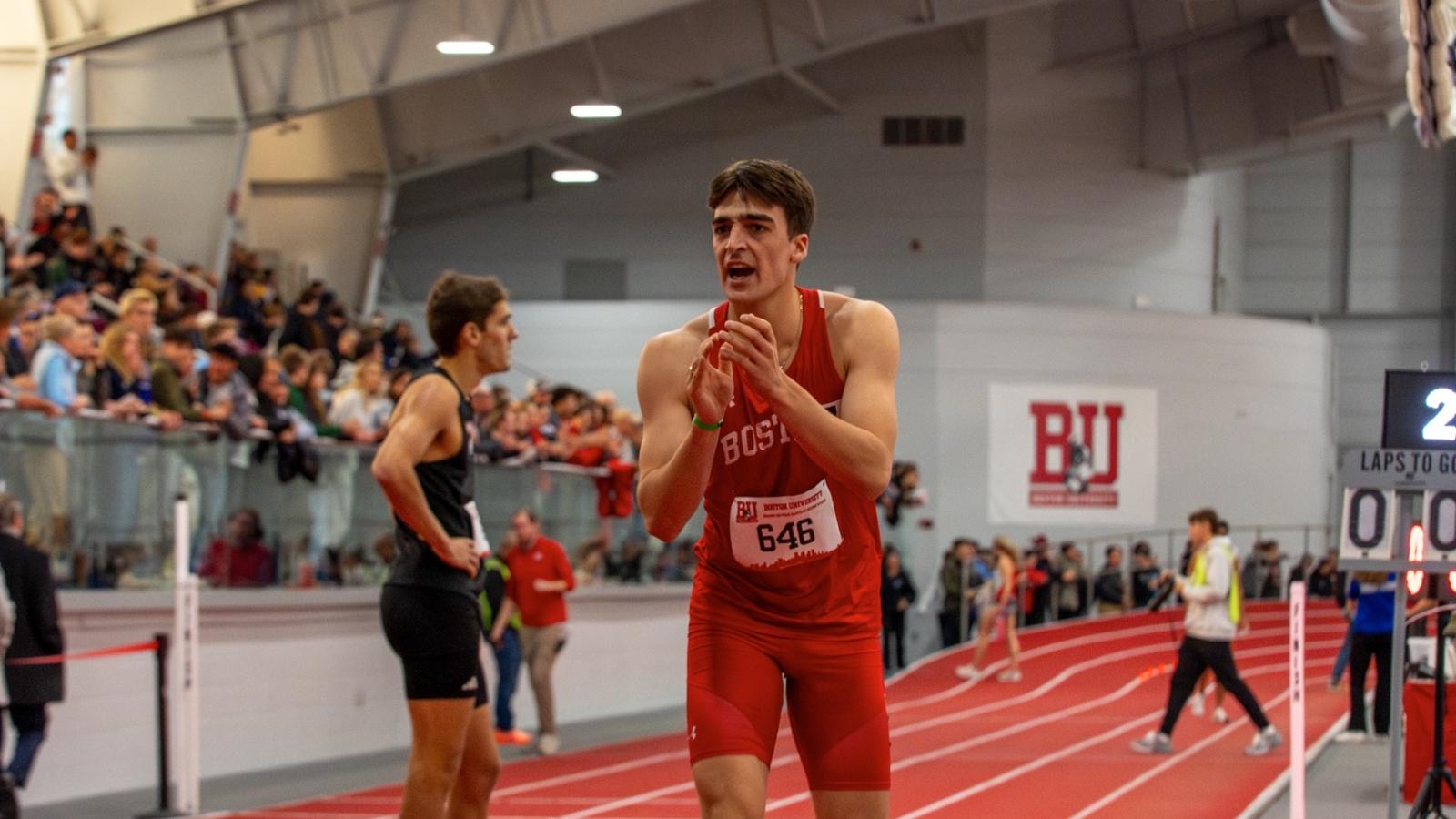
Cowan crossed the 800m finish line in 1:47.88 at the Sharon Colyear-Danville Season Opener on Saturday, finishing third overall and second among collegians. His mark is the second-fastest at BU and he is just one of two Patriot League runners to record a sub-1:48 time indoors since at least 2004. The time is also the fastest in Division I after the opening weekend of events.
This is Cowan’s first Track Athlete of the Week honor and it marks back-to-back years of the Terriers having a men’s Track Athlete of the Week recipient after the first weekend of competition.
Sports
Emma Grace Named to AVCA All-Region Team
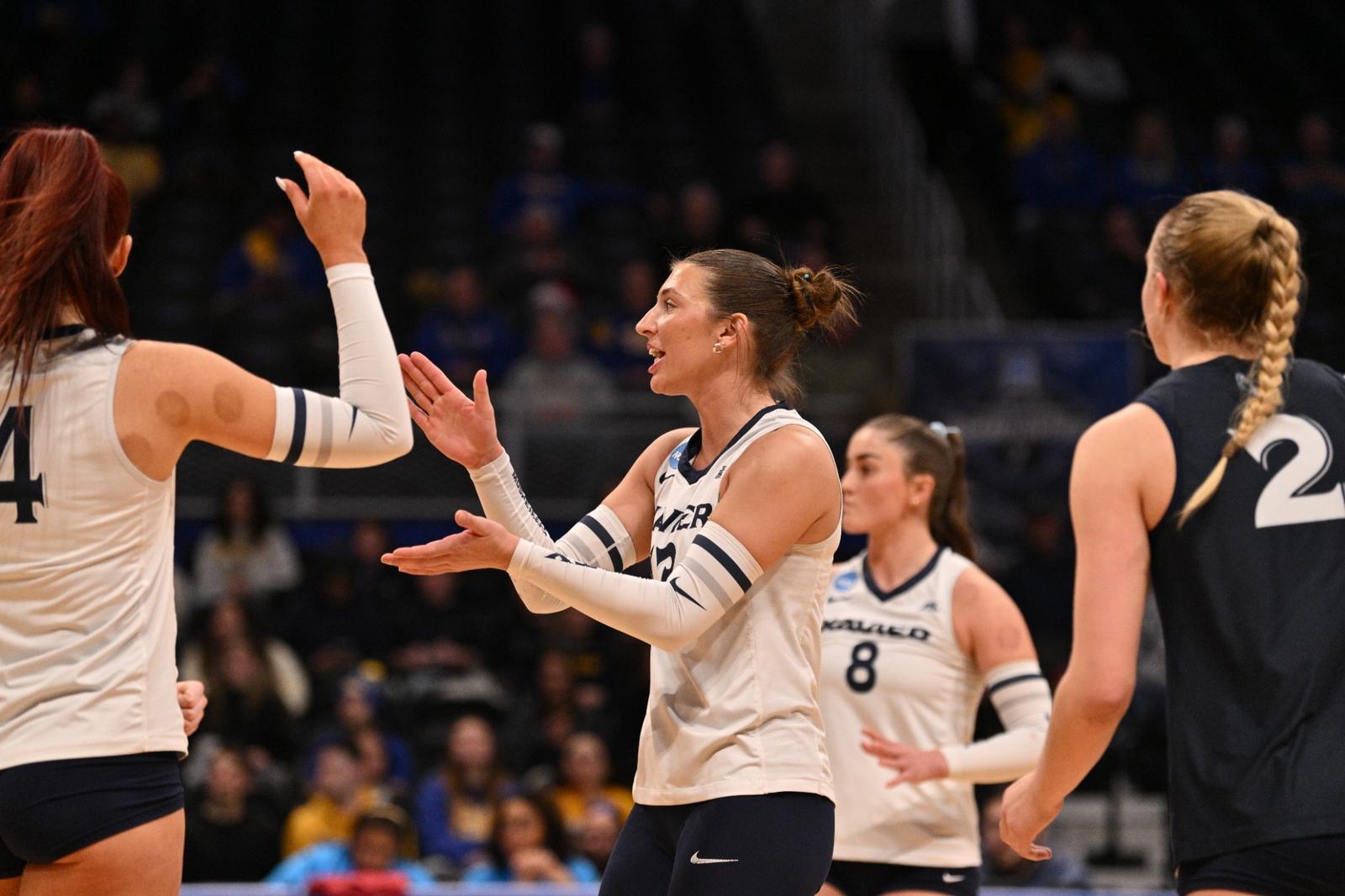
The redshirt senior led Xavier in kills (379) and points (429) this season en route to the program’s first NCAA appearance since 2007. She ranks in the top-10 of the BIG EAST with 3.41 kills, 3.14 digs and 3.86 points per set.
Grace was a unanimous All-BIG EAST Team selection for the first time in her career. She also earned a spot on the BIG EAST All-Tournament Team after leading the Musketeers to their second-ever BIG EAST finals match appearance.
The Kentucky native was a four-time BIG EAST weekly honor roll selection this season. She led XU to a 3-0 weekend at the Xavier Invitational to earn Tournament MVP honors. She was also named to the Stacheville Challenge All-Tournament Team for her performance in Xavier’s 3-0 opening weekend at Austin Peay.
The outside hitter posted 19 double-doubles this season to end her career with 44 total. She had 20+ kills in five separate matches this year and hit above .300 on 12 different occasions. She had a career-high 23 kills against Miami (OH) on September 5 and matched it again at Villanova on October 4.
Grace finished her Xavier career ninth all-time in points with 1291. She became the third player in program history to record at least 1000 kills, 1000 digs and 100 aces.
Sports
Grace Camerlingo Earns Patriot League Women’s Rookie of the Week
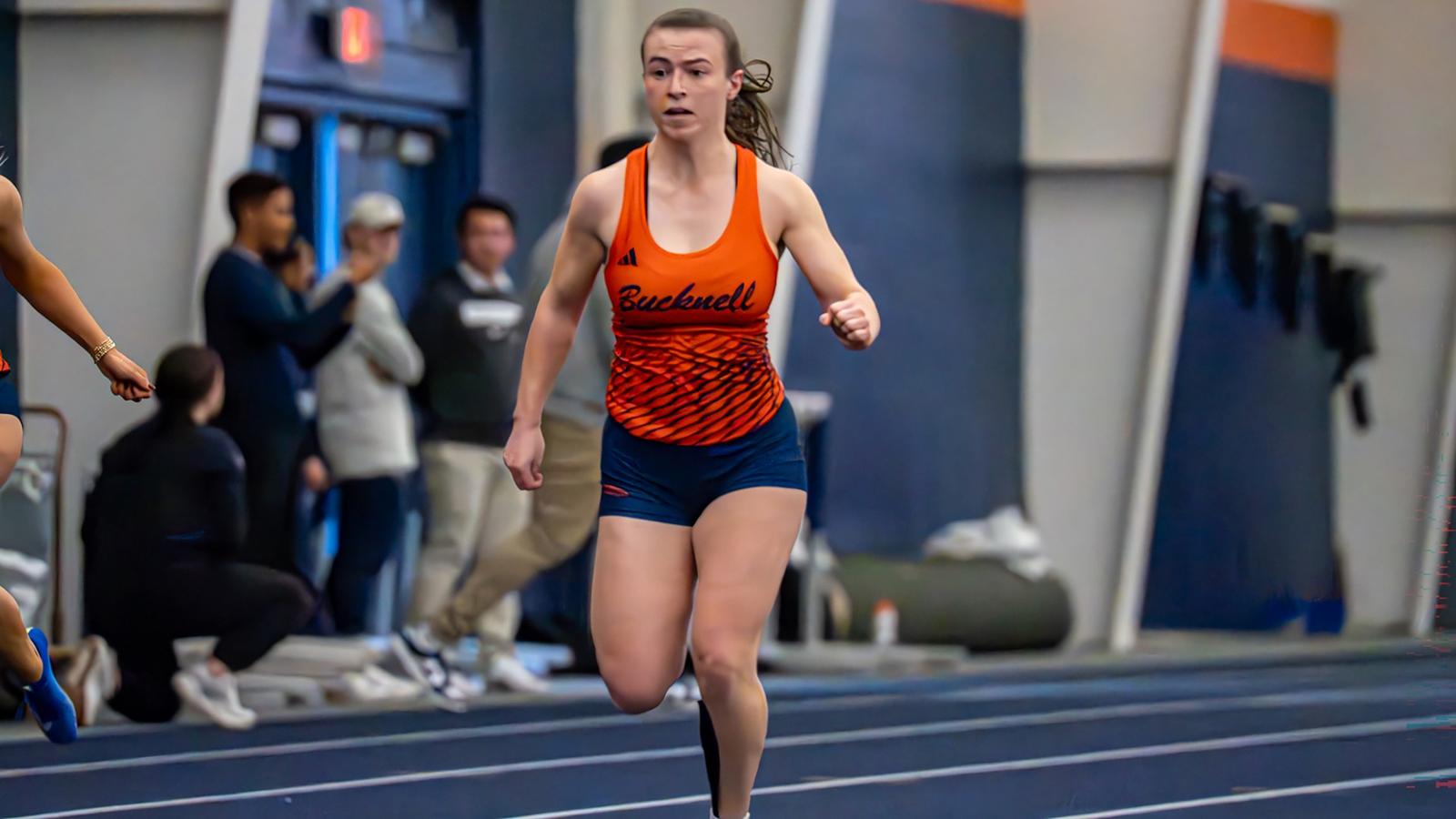
Camerlingo sizzled in the 60-meter dash finals, recording a time of 7.62 to finish second in the event, and it required a personal record (7.59) by the winner from Penn State, to edge the Bison freshman. More impressively, Camerlingo improved upon her preliminary mark of 7.68, displaying veteran stamina.
“It was a great opener for Grace,” said Bucknell sprints coach Richard Alexander. “She came to Bucknell without much track experience, so she is just scratching the surface of her potential.”
Her 7.62 time slotted her third in the Bucknell record book between Orange & Blue legends Meghan Quinn and current Bison multi & jumps coach Kaitlin Salisbury.
Bucknell track & field returns to action next month at the Nittany Lion Challenge.
Sports
Volleyball Senior Trio Earns AVCA All-Region Honors
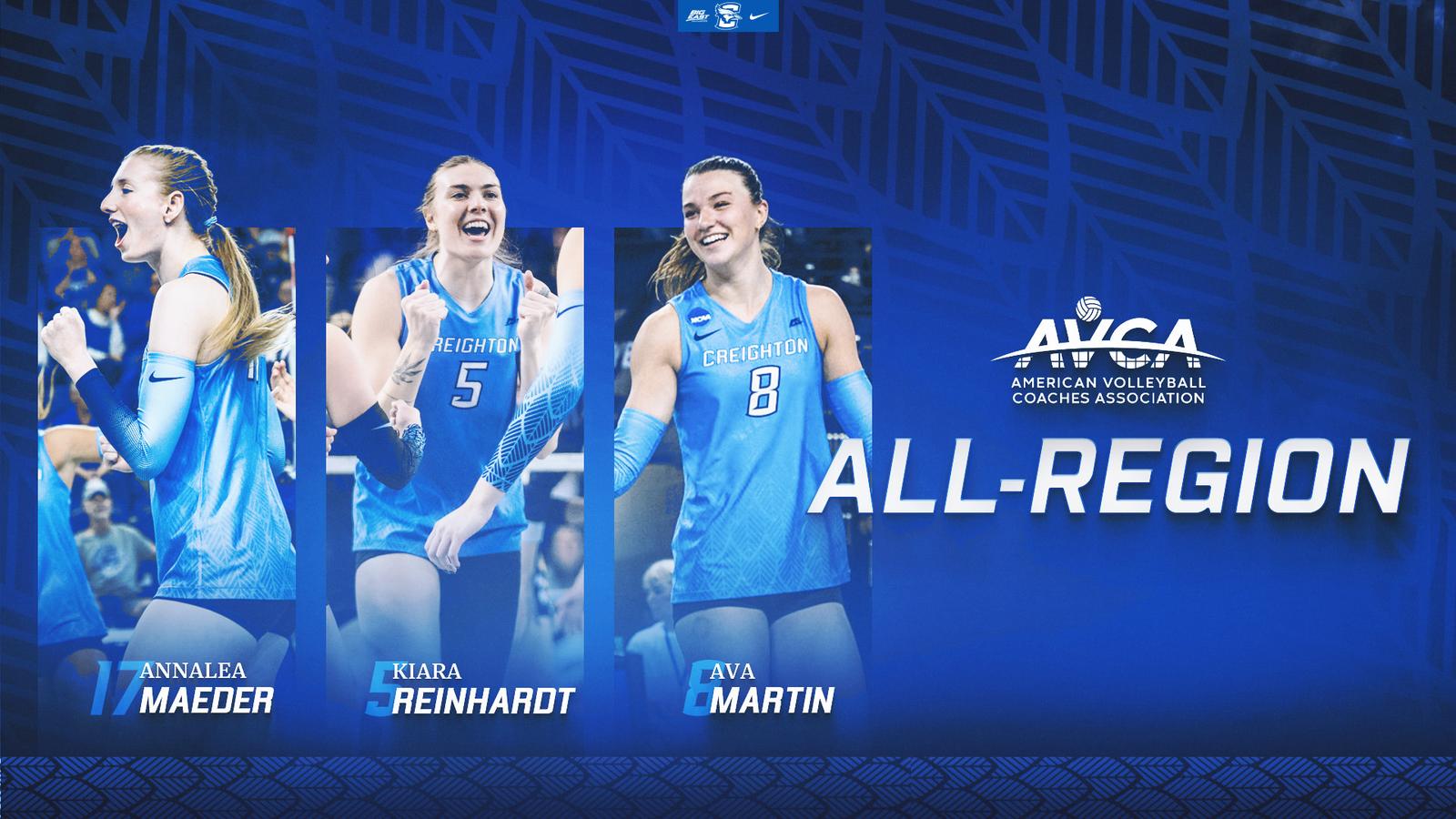
The 213 student-athletes who made All-Region represent 109 different schools.
This year’s awards mark the 11th straight year that Creighton has had two or more student-athletes earn First Team All-Region acclaim, putting the Bluejays in elite company with the likes of Texas (25 straight years), Kentucky (16), Minnesota (16), Nebraska (15), Wisconsin (14) and Pittsburgh (11).
Creighton’s 36 First Team All-Region selections since 2015 ranks 10th-most nationally, trailing only Nebraska (51), Kentucky (49), Texas (48), Minnesota (46), Stanford (46), Pittsburgh (45), Wisconsin (41), Florida (38) and Louisville (38).
Maeder is in her first season at Creighton, but fifth overall in college after four years at Cal. In her lone season with the Bluejays, Maeder has been a seven-time BIG EAST Setter of the Week and leads the league with 10.69 assists per set. The Ried, Switzerland product also ranks fourth in the BIG EAST with 0.41 aces per set and directs a Bluejay offense that hits a league-best .292. Maeder was named All-BIG EAST and named BIG EAST Setter of the Year.
Martin is the BIG EAST’s only player on the AVCA National Player of the Year Watch List, and lived up to the Preseason BIG EAST Player of the Year hype she was anointed by league coaches before the fall. Martin finished in the top 10 in the BIG EAST in league play in points per set (5.16), kills per set (4.52), aces per set (0.50) and hitting percentage (.376). In her career, she’s fourth in CU history with 1,607 kills and third with 127 aces. The Overland Park, Kan., native was named BIG EAST Tournament MVP and was recently the second pick in the Major League Volleyball Draft. This is Martin’s third straight First Team All-Region accolade, making her just the fifth player in program history to be honored three times or more along with Jaali Winters (2015-18), Kendra Wait (2021-24), Kelli Browning (2012-14) and Norah Sis (2021, 2022, 2024).
Reinhardt is a sixth-year senior who became the winningest player (123) in program history and in position to set a CU single-season record for hitting percentage. She owns 801 career kills, is fourth in program history with 530 blocks and fifth with a .333 hitting percentage. Reinhardt was the eighth pick in the Major League Volleyball Draft from Cedarburg, Wis.
This is the second straight season Creighton has been in the West Region, a change from past years when CU was in the East Region and fought for honors among various teams from the Atlantic Coast Conference, America East Conference, Atlantic 10 Conference, BIG EAST Conference, Coastal Athletic Association, Ivy League, Mid-Eastern Athletic Conference and Patriot Leagues, in addition to then-independent Hartford.
No. 11 Creighton (27-5) is in the midst of its 14th straight trip to the NCAA Tournament and will travel to the campus of the University of Kentucky later today in anticipation of Thursday’s 12 p.m. Central contest vs. No. 8 Arizona State (28-3) that will be nationally-televised on ESPN2.
All-America honors will be announced next Wednesday (Dec. 17) prior to next week’s Final Four in Kansas City.
CENTRAL REGION
Player of the Year: Shaylee Myers, Kansas State University, OH, Sr.
Freshman of the Year: Jovanna Zelenovic, University of Kansas, RS
Coach of the Year: Bobbi Petersen, University of Northern Iowa
EAST COAST REGION
Player of the Year: Olivia Babcock, University of Pittsburgh, RS, Jr.
Freshman of the Year: Reagan Ennist, University of Virginia, OH
Coach of the Year: Dan Fisher, University of Pittsburgh
MIDWEST REGION
Player of the Year: Kenna Wollard, Purdue University, OH, Jr.
Freshman of the Year: Teodora Krickovic, Indiana University, S
Coach of the Year: Dave Shondell, Purdue University
NORTH REGION
Player of the Year: Mimi Colyer, University of Wisconsin, Sr., OH
Freshman of the Year: Ava Poinsett, Yale University, OH
Coach of the Year: Kelly Sheffield, University of Wisconsin
NORTHWEST REGION
Player of the Year:Julia Hanson, University of Minnesota, OH, Sr.
Freshman of the Year: Alanah Clemente, University of Oregon, RS
Coach of the Year: Keegan Cook, University of Minnesota
PACIFIC REGION
Player of the Year: Elia Rubin, Stanford University, OH, Sr.
Freshman of the Year: Logan Parks, Stanford University, S
Coach of the Year: Kevin Hambly, Stanford University
SOUTH REGION
Player of the Year: Eva Hudson, University of Kentucky, OH, Sr.
Freshman of the Year: Kassie O’Brien, University of Kentucky, S
Coach of the Year: Craig Skinner, University of Kentucky
SOUTHEAST REGION
Player of the Year: Flormarie Heredia Colon, University of Miami, OH, Sr.
Freshman of the Year: Lily Hayes, University of Florida, L
Coach of the Year: Heather Gearhart, Winthrop University
SOUTHWEST REGION
Player of the Year: Torrey Stafford, University of Texas, OH, Jr.
Freshman of the Year: Cari Spears, University of Texas, RS
Coach of the Year: Sam Erger, Southern Methodist University
WEST REGION
Player of the Year: Bergen Reilly, University of Nebraska, S, Jr.
Freshman of the Year: Suli Davis, Brigham Young University, OH
Coach of the Year: Dani Busboom Kelly, University of Nebraska
2025 AVCA DIVISION I REGION COACHES OF THE YEAR
The following coaches have been selected as this year’s AVCA Region Coaches of the Year. Each of the honorees can be considered for the AVCA National Coach of the Year, and the awards will be presented at the Coaches Honors Luncheon in Kansas City on Dec. 18, at the 2025 AVCA Convention.
CENTRAL REGION COACH OF THE YEAR
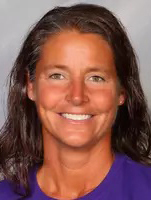 Bobbi Petersen, University of Northern Iowa
Bobbi Petersen, University of Northern Iowa
2025 Record (as of Dec. 9): 26-6
Petersen was named the Missouri Valley Coach of the Year for a conference-record, fourth-straight season. She helped UNI win 20 or more matches for the 22nd time in her 26-year career, and the squad gave her a 13th MVC regular-season championship and a third-consecutive undefeated conference season.
EAST COAST REGION COACH OF THE YEAR
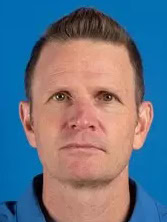 Dan Fisher, University of Pittsburgh
Dan Fisher, University of Pittsburgh
2025 Record (as of Dec. 9): 28-4
Pittsburgh has been a force again this season under Fisher, who is in his 13th season on the sidelines for the Panthers. Fisher guided his 2025 squad to the school’s fourth-straight ACC title, and they are 28-4 heading into the regional round of this year’s NCAA Championship. He picked up his 400th win as a head collegiate coach in early September.
MIDWEST REGION COACH OF THE YEAR
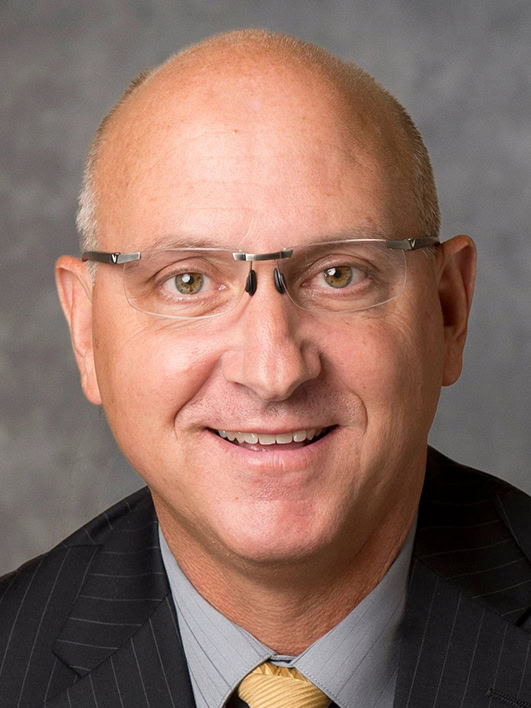 Dave Shondell, Purdue University
Dave Shondell, Purdue University
2025 Record (as of Dec. 9): 26-6
The 24-year coaching veteran is enjoying another very successful season. In addition to notching career coaching win No. 500, he weathered losing a number of key transfers and kept Purdue playing at an elite level in 2025. Among his squad’s many accomplishments, they have recorded nine wins over ranked teams so far this season.
NORTH REGION COACH OF THE YEAR
 Kelly Sheffield, University of Wisconsin
Kelly Sheffield, University of Wisconsin
2025 Record (as of Dec. 9): 26-4
Another year, another stellar season for Sheffield and the Badgers. The veteran coach’s team is finding its stride at the right time, as they rolled through the early rounds of the 2025 NCAA Championship with a pair of sweeps and head into this week’s regional on an 11-match win streak. Early this season, he earned his 600th career coaching victory.
NORTHWEST REGION COACH OF THE YEAR
 Keegan Cook, University of Minnesota
Keegan Cook, University of Minnesota
2025 Record (as of Dec. 9): 24-9
Cook has done a lot of impressive things in his career, but the fact that his team is in the Sweet 16 of the 2025 NCAA Championship is remarkable. His Gophers, who began the season ranked 12th, lost four starters to season-ending injuries early in the year. The team persevered, stayed in the poll all season, and got sixth in the Big Ten.
PACIFIC REGION COACH OF THE YEAR
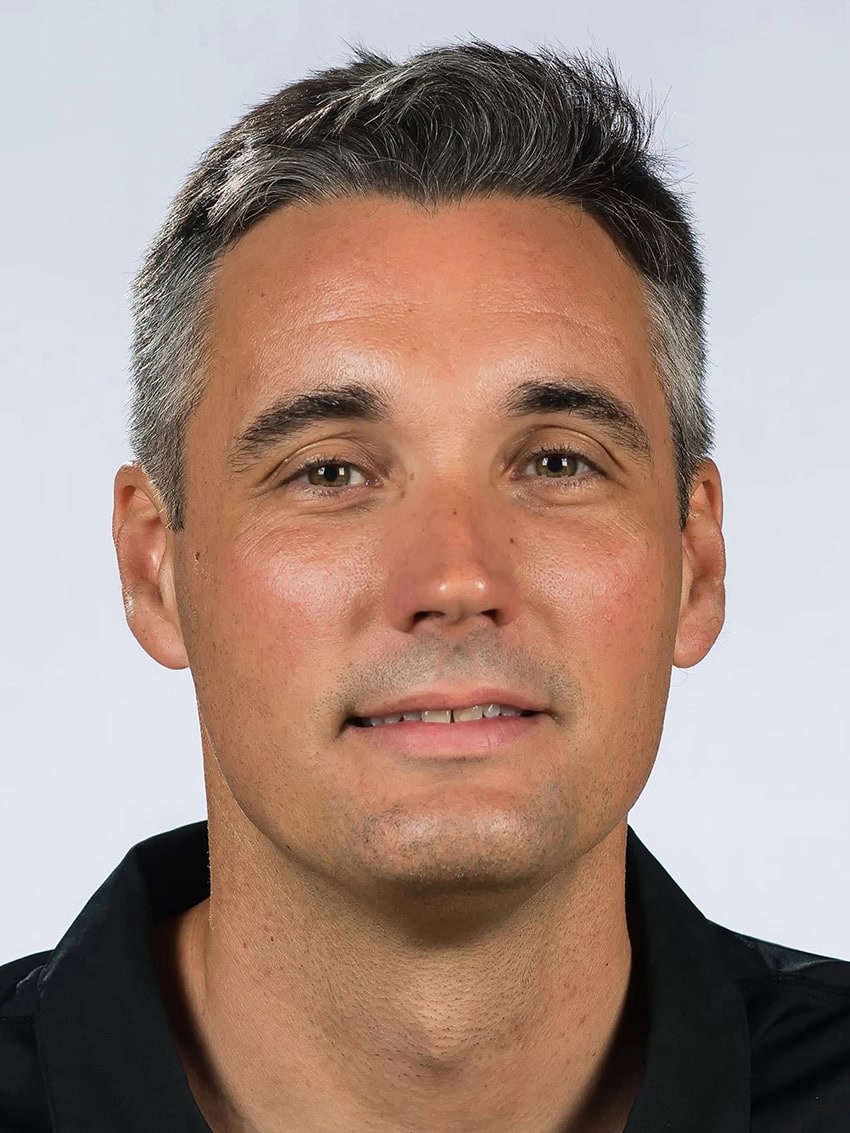 Kevin Hambly, Stanford University
Kevin Hambly, Stanford University
2025 Record (as of Dec. 9): 29-4
Despite losing a number of key players from last season, Hambly and the Cardinal have enjoyed a very successful campaign so far in 2025. His ninth season at Stanford included an Atlantic Coast Conference title and another NCAA Championship Sweet Sixteen appearance. Late this season, he earned his 400th career coaching victory.
SOUTH REGION COACH OF THE YEAR
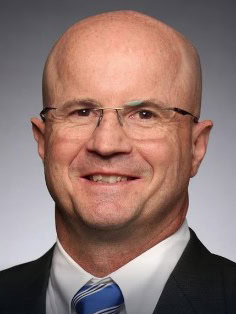 Craig Skinner, University of Kentucky
Craig Skinner, University of Kentucky
2025 Record (as of Dec. 9): 27-2
Skinner more than earned his second-consecutive Region Coach of the Year award, as his team has taken no prisoners in 2025. They enter the Sweet 16 on a 24-match winning streak and ran the table in the Southeastern Conference, earning both the regular-season title—the school’s ninth in a row—and SEC Tournament championship.
SOUTHEAST REGION COACH OF THE YEAR
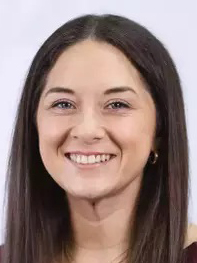 Heather Gearhart, Winthrop University
Heather Gearhart, Winthrop University
2025 Record (as of Dec. 9): 18-7
Gearhart made her third season as the head coach at Winthrop a memorable one. She helped the Eagles take home the 2025 Big South Conference regular-season title, after they went 12-2 in league play and closed the regular-season with a 10-match winning streak. The team had five players on the 2025 All-Big South teams.
SOUTHWEST REGION COACH OF THE YEAR
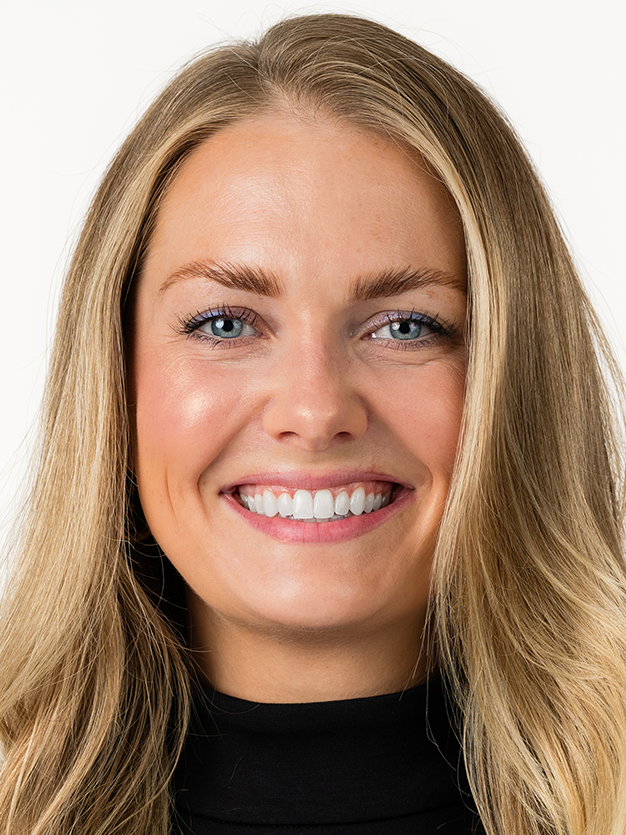 Sam Erger, Southern Methodist University
Sam Erger, Southern Methodist University
2025 Record (as of Dec. 9): 27-5
Erger and the Mustangs have solidified their place in the upper echelon of Division I volleyball in 2025. The fourth-year SMU coach has her team is in the Sweet Sixteen for the first time in program history. In the NCAA Championship second-round sweep of Florida over the weekend, she picked up her 100th career win at SMU.
WEST REGION COACH OF THE YEAR
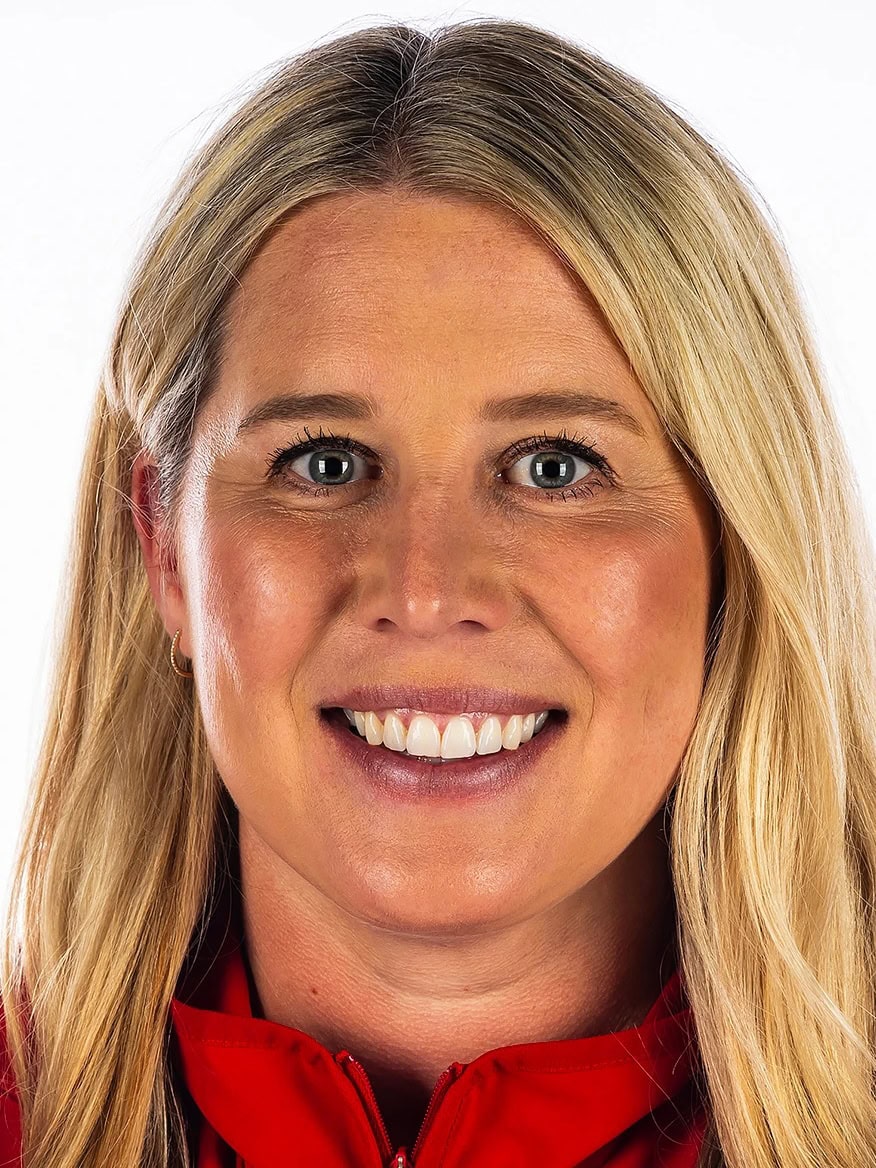 Dani Busboom Kelly, University of Nebraska
Dani Busboom Kelly, University of Nebraska
2025 Record (as of Dec. 9): 32-0
Replacing a legend is never easy, but Busboom Kelly has proven that she’s up to the challenge in her first year as head coach at Nebraska. Her 2025 team has made history with a 30-0 regular-season record and 20-0 mark in Big Ten play. How dominant have the Huskers been? They enter the Sweet 16 having dropped only seven sets this season.
Sports
Cosby Named CIAA Track Athlete of the Week
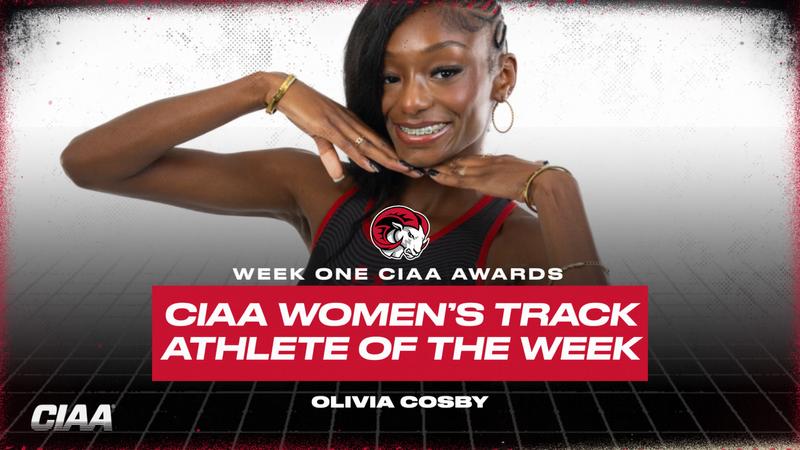
WINSTON-SALEM, N.C. – Olivia Cosby from the Winston-Salem State University women’s track and field team has been named the Central Intercollegiate Athletic Association (CIAA) Women’s Track Athlete of the Week for week one, the league announced Tuesday morning.
Cosby, a junior from Fortson, Georgia opened her season with an impressive performance at the Visit Winston Salem College Kickoff at JDL. Cosby placed third in the 400m seeded with a time of 56.83 and later anchored the 4x400m relay to a total time of 3:58.54, closing her leg with a strong 58.72 split. Her effort set an early tone for the Rams as they launched their indoor campaign.
Sports
Southeastern’s McKelvey Earns AVCA All-Region Mention
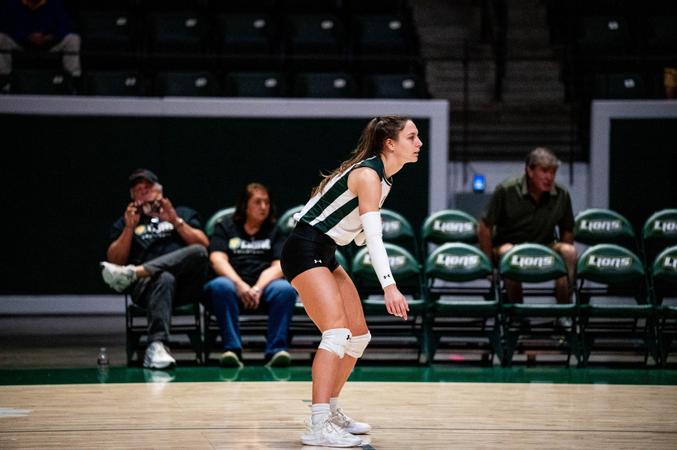
HAMMOND, La. – The Southeastern Louisiana University volleyball team was honored Tuesday, when junior Kyra McKelvey was named an All-Central Region Honorable Mention by the American Volleyball Coaches Association.
The Navarre, Fla., native put together a career year in 2025, adding an All-Region mention to her Southland Conference Player of the Year award, along with SLC First Team honors. Tuesday marks McKelvey’s first time receiving an AVCA award. She is also the only current Lady Lion to have an AVCA accolade with Cicily Hidalgo earning an honorable mention from the association in 2024.
McKelvey helped the Lady Lions put together a 20-9 overall record with a 12-4 record in SLC play. She finished the season with the third-highest hitting percentage in the conference, reaching a .340 mark. The opposite hitter also ranked fourth in the league in kills per set, averaging 3.64 in the category for a total of 368 kills.
The junior posted double-digit kills in 22 of SLU’s 29 games during the 2025 season, tying a career-high of 21 kills in Southeastern’s match against Central Arkansas on Sept. 6.
DIGGIN’ IT CLUB / S CLUB
Fans interested in becoming active supporters of the Southeastern volleyball program are encouraged to join the Diggin’ It Club. Lion volleyball alums are encouraged to join the exclusive S Club, which is restricted to Southeastern athletic letter winners.
All membership fees and donations to both the Diggin’ It Club and S Club (volleyball) are available for the exclusive use of the Southeastern volleyball program. Membership information is available by contacting the Lion Athletics Association at laa@southeastern.edu or (985) 549-5091 or visiting www.LionUp.com.
SOCIAL MEDIA
For more information on Lady Lions Volleyball, follow @LionUpVB on X and Instagram or like /SLUathletics on Facebook.
-

 Rec Sports2 weeks ago
Rec Sports2 weeks agoFirst Tee Winter Registration is open
-

 Rec Sports2 weeks ago
Rec Sports2 weeks agoFargo girl, 13, dies after collapsing during school basketball game – Grand Forks Herald
-

 Motorsports2 weeks ago
Motorsports2 weeks agoCPG Brands Like Allegra Are Betting on F1 for the First Time
-

 Motorsports2 weeks ago
Motorsports2 weeks agoF1 Las Vegas: Verstappen win, Norris and Piastri DQ tighten 2025 title fight
-

 Sports2 weeks ago
Sports2 weeks agoTwo Pro Volleyball Leagues Serve Up Plans for Minnesota Teams
-

 Sports2 weeks ago
Sports2 weeks agoUtah State Announces 2025-26 Indoor Track & Field Schedule
-

 Sports2 weeks ago
Sports2 weeks agoSycamores unveil 2026 track and field schedule
-

 Motorsports2 weeks ago
Motorsports2 weeks agoRedemption Means First Pro Stock World Championship for Dallas Glenn
-

 Sports2 weeks ago
Sports2 weeks agoTexas volleyball vs Kentucky game score: Live SEC tournament updates
-

 NIL1 week ago
NIL1 week agoBowl Projections: ESPN predicts 12-team College Football Playoff bracket, full bowl slate after Week 14


























